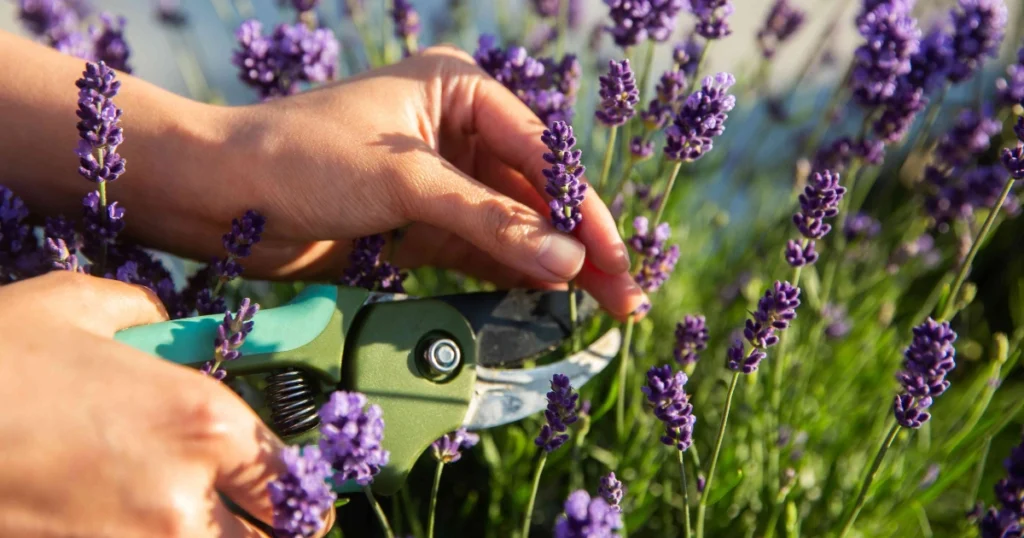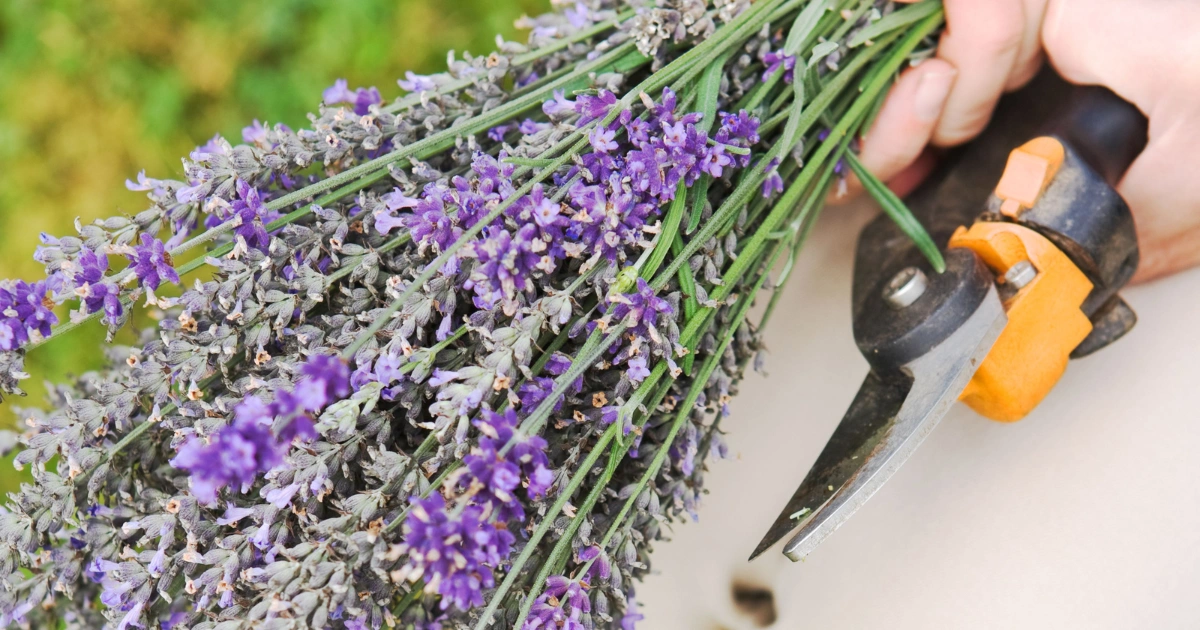Lavender is not only beautiful and fragrant, it’s also one of the most rewarding plants to grow—as long as you prune it correctly. Regular pruning keeps lavender healthy, compact, and flowering abundantly. Without it, your plant may become woody, sparse, and short-lived.
Here’s a complete guide on why, when, and how to prune lavender for best results.

✨ Benefits of Pruning Lavender
Pruning is more than just a cosmetic touch. It provides several long-term benefits for your lavender plants:
Stimulates new growth and bushier shape
Prevents the plant from becoming woody and leggy
Extends the life of the plant
Encourages more blooms each season
Improves air circulation and reduces risk of disease
📅 When to Prune Lavender
End of Summer to Early Autumn
Do a light pruning after flowering to remove dried flower spikes and tidy up the shape. This prepares the plant for winter while keeping it neat.
Spring (after frost risk has passed)
This is the time for hard pruning. Cut back more aggressively to stimulate vigorous new growth before blooming season begins.
Do Not Prune in Winter
Avoid pruning in cold months, as open cuts and stress can damage the plant during freezing temperatures.
✂️ What Tools You’ll Need
🧤 Gardening gloves (lavender can be a bit scratchy)
✂️ Sharp pruning shears or scissors
🧴 Disinfectant (to clean your tools and prevent disease spread)
🪣 A bucket or basket for collecting cuttings
Make sure your tools are clean and sharp to ensure smooth cuts and protect your plant from unnecessary stress.
🔍 How to Prune Lavender Step by Step
Step 1: Identify Your Variety
English lavender (Lavandula angustifolia) can handle a strong prune in spring.
French and Spanish lavenders (Lavandula dentata or stoechas) prefer lighter, more frequent trims.
Step 2: Inspect the Plant
Look for dead flower heads, woody stems, or damaged parts. Remove these first.
Step 3: Post-Flowering Prune (Late Summer)
After the blooms fade, cut back about one-third of the green foliage.
Avoid cutting into the old wood at the base—lavender rarely grows back from woody parts.
Step 4: Spring Prune (After Last Frost)
Cut the plant back by up to two-thirds of its green growth, shaping it into a neat, rounded mound.
Again, do not cut into brown, leafless wood.
Step 5: Clean Up and Compost
Collect all trimmings. Compost healthy plant material and discard anything diseased or pest-infected.
✅ Helpful Tips for Success
Don’t cut into old wood—lavender does not regenerate well from it
Shape the plant into a rounded dome to prevent splitting under its own weight
Avoid heavy pruning in the plant’s first year—let it establish itself
Make pruning a yearly habit to encourage consistent flowering and structure
Choose sunny, dry days for pruning to reduce infection risk
❌ Common Mistakes to Avoid
Pruning during winter when the plant is vulnerable to cold
Cutting into woody stems where no green growth remains
Neglecting to prune at all—this leads to fewer blooms and an overly woody base
Skipping disinfection of your tools—can spread diseases between plants
Overpruning young plants before they’re fully established
🌼 Final Thought
Lavender is a low-maintenance yet high-reward plant—if you prune it wisely. Whether you’re growing it for scent, beauty, or pollinator support, proper annual pruning will help your lavender thrive for years.
Remember:
Light prune after flowering
Hard prune in spring
Never cut into old wood
Always prune with care and intention
Take a few minutes each year to shape and support your lavender. Your reward? A healthy, fragrant garden filled with purple blooms and buzzing bees.

